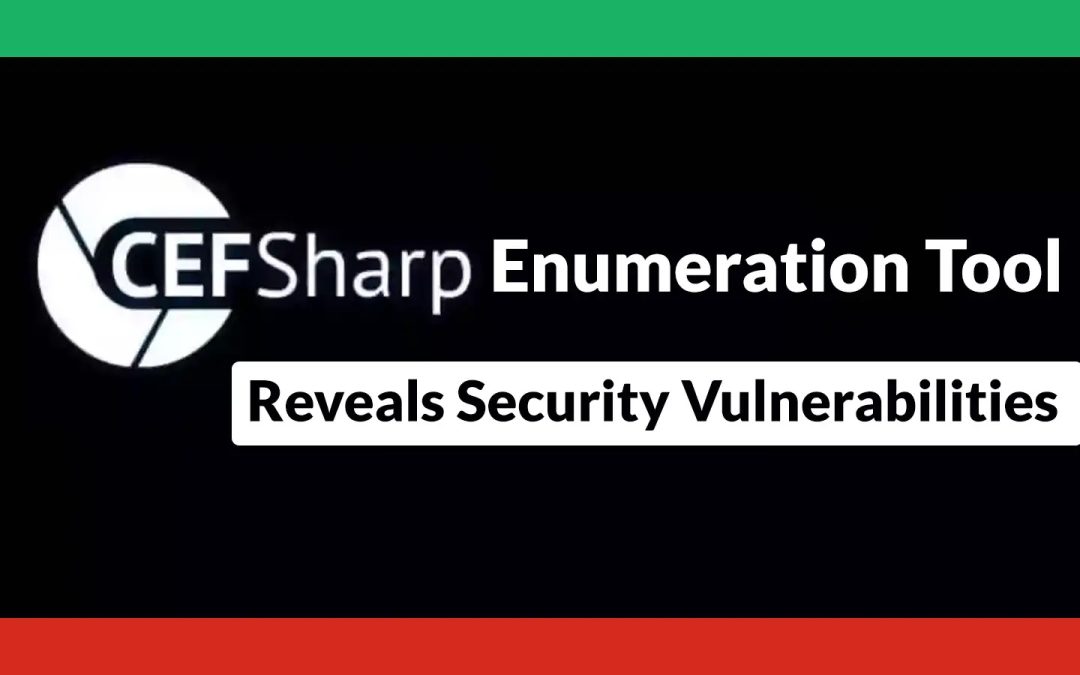“`html
Security analysts have disclosed notable weaknesses in .NET desktop software employing CefSharp, a widely used framework for integrating Chromium browsers within desktop applications, thus exposing numerous enterprise applications to possible remote code execution threats.
CefSharp, a streamlined .NET wrapper around the Chromium Embedded Framework, has become a fundamental technology for businesses constructing hybrid desktop applications that utilize web technologies.
Like Electron applications, CefSharp allows developers to create desktop applications using familiar web technologies while ensuring robust integration with Windows and the .NET framework.
Nonetheless, this architectural design has created a significant security gap that malicious actors are increasingly taking advantage of.
The core functionality of the framework is centered around establishing a two-way bridge between client-side JavaScript and internal .NET objects, effectively enabling web pages to engage with privileged system functionalities.
This architecture, while beneficial for legitimate development purposes, represents a major attack vector when applications are misconfigured or inadequately secured.
When paired with cross-site scripting vulnerabilities, these exposed .NET objects can offer attackers direct routes to system infiltration.
Dark Forge Labs researchers highlighted this emerging risk landscape and created CefEnum, a dedicated enumeration tool aimed at identifying and profiling CefSharp instances in enterprise settings.
The research team observed that around 30% of CefSharp’s bindings are constructed in C++/CLI, with the majority executed in C#, generating various potential attack surfaces across multiple technology stacks.
Their examination indicated that numerous organizations implement CefSharp-based applications without adequate security measures or understanding of the framework’s inherent security risks.
.webp)
The vulnerability landscape becomes especially alarming when analyzing the progression of attack chains.
Researchers noted that uncovering client-side vulnerabilities, such as cross-site scripting in thick-client applications, might initially appear atypical, as users typically don’t interact with these applications like conventional browsers.
However, when XSS vulnerabilities are combined with CefSharp’s JavaScript bridge to exposed .NET objects, even persistent XSS can quickly escalate into remote code execution incidents.
Exploitation Mechanisms and Object Discovery
The technical approach behind these attacks focuses on the detection and exploitation of exposed .NET objects via CefSharp’s JavaScript repository system.
Applications register objects with the browser using browser.JavascriptObjectRepository.Register, commonly adhering to camelCase naming conventions for bindable objects.
The CefEnum tool automates this discovery endeavor by employing an advanced fuzzing technique that attempts to bind to prevalent object names at roughly 2,000 attempts per second.
.webp)
Upon establishing a connection with a target application, CefEnum delivers an extensive wordlist based on PortSwigger’s param-miner to the client’s frontend.
The tool then methodically executes CefSharp.BindObjectAsync("ObjectName") for each entry and checks for successful binding using CefSharp.IsObjectCached(ObjectName).
Once an object is located, the tool utilizes introspection methods to enumerate all available techniques and functions, offering attackers a complete inventory of exploitable endpoints.
.webp)
The exploitation phase entails direct method invocation via JavaScript, such as window.customObject.WriteFile("test.txt"), potentially leading to immediate file system access or other privileged operations depending on the capabilities of the exposed object.
This attack vector is particularly effective as it circumvents traditional web application security measures while operating within the trusted context of the desktop application environment.
“`


.png%0D%0A)